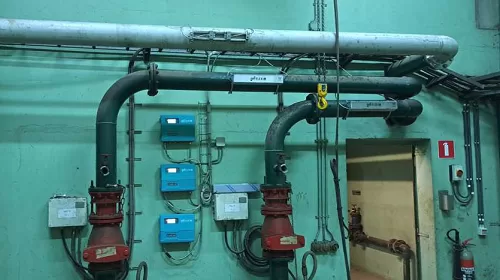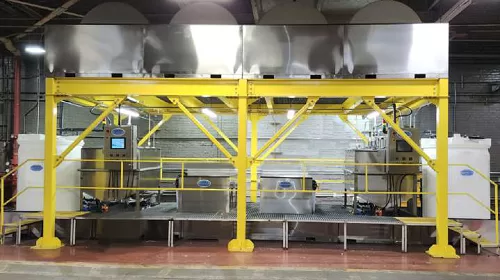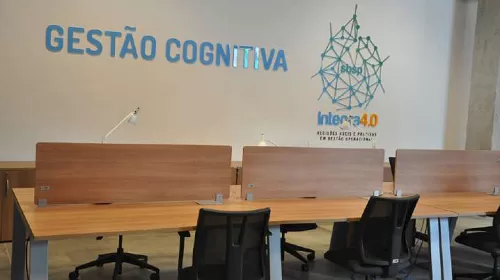By S Sundaramoorthy, S Saktheeswaran and A Jayabalan
Abstract
Chennai Metropolis is a coastal city of Bay of Bengal dependent wholly on monsoons failing about once in four years and limitations of reservoir storages. Import of water from neighboring state is confronted by monsoon failures there. Seawater Desalination plants are functioning but 90 % of operating cost is subsidized. A study by the United Nations Development Programme (UNDP) during the 1980’s and again in 1990’s identified sub- surface storage in the city’s contiguous riverine aquifer extending to a phenomenal 150 km inland and a storage capacity of 1250 days but is yet to be exploited. Sewage Reuse at drinking grade for offsetting cooling water in petro chemicals for 30 Million Liters Daily (MLD) is practiced here from 1992. Elsewhere, the costal Orange Country in California operates the Ground Water Replenishment Programme (GWRS) at nearly 380 MLD of similarly treated sewage and is blended with inland aquifer water and injected into the local coastal aquifer as a “recycle-reuse” in that desert region. A combination of these practices as a Conjunctive use of monsoon surplus, treated sewage and the local aquifer is the savior but there is conjunctivitis clouding the vision. It is not far off when potential earthquake by land subsidence from over exploitation of ground water may suddenly set in and coupled with monsoon failures the metropolis may well become deserted land. The article underscores the procrastination and the absence of political will to implement and presents the way forward at least now.
- The Monsoon, Reservoirs, Aquifers and the tale of man-made scarcity
- Criticality of the Water Sources Vs Storages
This is complied in Table-1 and does not need any explanation to drive home its fragility.
3 Criticality of the Sources Vs Reservoir Capacities for Public Water Supply
A plot of the remaining storages in the reservoirs at the beginning of each month is iterated in Fig.4. It shows the storage in number of days considering, the rainfall, evaporation and abstraction for daily supply when the two North East (NE) and South West (SW) monsoons are normal and when one of these and both of these fail
It shows that even the best SW and NE monsoons do not guarantee round the year domestic demand of 1600 MLD because the precipitation overflows the reservoirs to the sea. Monsoon failures gets the reservoir storages reduced sometimes to bare minimum and is pumped up to the intake bell mouths and then treated after cascade aeration and higher doses of coagulants besides activated carbon dispersion in the flocculator for odour control and supplied once in two or three days or in a rare case as in 1995, complete shutdown of piped water supply and door-to-door supply by water tankers in Fig 5.
4 Seawater Desalination-Palliative at best
There are seawater desalination plants of 200 MLD output at O&M of Rupees 50 per 1000 liters, but water charge to public is just about Rupees 5 per 1000 liters and thus heavily cross-subsidized. The 2017 report of the Asian Development Bank is in Table-2 based on the then water tariff at Rs 50 per month per dwelling. This has been increased from Rupees 50 to 80 per month in 2019 but even then, in the next slot in Table-2 in the year 2024, the gain is only 39 million USD which cannot offset the purchase of desalinated water at 62 million USD. This compels a perpetual financial subsidy and clearly will only increase with the passage of time.
5 The “Buried Channel” and Conjunctive Use Potential
The UNDP study of 1990’s documented the “buried channel” of 150 km length and 2 to 5 km wide north of the metropolis as in Fig.6 with overlying clay and underlying sandy alluvium. Detailed investigation for initial 25 km shows alluvium of 5 m depth and a belly of 35 m depth after 20 km. At an average sand depth of 20 m and a void ratio of 40 %, the pore volume can be 750 Million cum and can hold up nearly 470 days of the demand of 1600 MLD. In fact, lateral hydraulic diffusion cannot be ruled out and can hold up more. Once saturated, the further advantage is savings of evaporation of 40 % of the storage as in the case of surface reservoir and also avoiding stray pollutants as the Perfluoroalkyl and Polyfluoroalkyl Substances.
6 The “Sink-Hole” Concept of Gravitated Alluvium Recharge of Monsoon Floods
The “sink-holes” are open wells into which the flood waters drain by gravity and reach the underground as a “fixed deposit” and one such is seen in Fig. 7 here in Tamilnadu itself where the 2021 NE monsoon flood waters “vanished” by flowing into this and recharging the surrounding habitations. The Indian Institute of Technology Madras has studied this and estimates that this single sink-hole has recharged 6000 Million Liters of flood runoff in the 2021 NE monsoon and that the surrounding areas are subsurface limestone and calcareous deposits susceptible to chemical dissolution in contact with groundwater or experience repeated wetting and drying cycles and these reactions initiate the formation of small pore cavities, which form preferential flow paths which create micro-fractures that accelerate chemical reactions and cause further dissolution of limestone rock interconnected caves and caverns termed ‘karst aquifer systems’. However, the disadvantage is increasing the hardness of the water from the calcareous deposits and which can precipitate the Calcium bicarbonate into Calcium carbonate on contacting the atmosphere and dangerously bind and seal soil pores. Fortunately, the alluvium discovered by the UNDP studies for Chennai is pure sandy and it should be possible to locate transverse batteries of such sink-holes for gravitated recharge of the alluvium in the case of the surface runoff of the monsoon floods and upstream of the check dams
7 The Hydrogeology of the GWRS, USA
The 380 MLD GWRS system of Orange County in California in USA is illustrated in Fig.8. The advanced treated sewage is blended with water from inland bore wells and injected into coastal bore wells.
8 The History Sewage Reuse and its Drinkability at Chennai
Chennai has achieved this to drinking grade for industries from R&D over 1965 to 2019 as in Figs.9, 10 and 11
9 The Sequence of Implementation for Sewage Reuse
The existing STPs are without nitrogen and phosphorous removal which are not needed for the industries, but needed for alluvium recharge. These are to be approached by the entire raw sewage received at these STPs in above ground side-stream leaping weir for a steady flow and the existing aeration tank itself accommodated for biological nitrification-denitrification and Poly Aluminium Chloride added to the mixed liquor for precipitating the phosphorous in excess sludge in final clarifier. Thereafter, the already proven TTRO is continued and blended with fresh water and injected at Kortalaiyar River sea mouth and extracted inland like in the GWRS. An additional safety is the extracted water is pumped to fresh water reservoir for naturalization and treated in the existing water treatment plant. A further advantage is prevention of seawater intrusion as in Fig. 13.
10 The Economics
Pumping the treated sewage, injecting through the aquifer, its extraction inland and pumped conveyance to the fresh water reservoir at about Rs 5 per 1000 liters whereas, seawater desalination costs Rs 50 per 1000 liters but the public levy is only about Rs 5 per 1000 liters. This 90 % cost subsidy cannot go on forever because, other coastal regions of the state will demand similar seawater desalination and financially impossible.
11 The Relative unit Operations at GWRS and the Proposed Chennai Indirect Potable Reuse
A comparison of the proposed treatment unit operations in sewage reuse at Chennai as compared to the GWRS is presented in Table-3 and may be seen that the proposed Chennai reuse is relatively more robust in its ability to bring about the conjunctive use of freshwater from monsoons, treated sewage from the city and the aquifer of the river system and finely balanced out by optimal use of the existing surface reservoirs itself for all times to come. It does also permit most importantly avoiding the 40 % water lost due to evaporation in surface reservoirs.
The Way Forward
12-1. Identify the least top clay layer and construct check dams between the 20th to 25th km from the sea mouth as can in Fig.6 to intercept the flood runoff and provide transverse battery of sink-holes upstream of the check dam to gravitate the flood runoff into the alluvium
12-2. Provide side-stream balancing of raw sewage in existing STPs and nitrification-denitrification in aeration tank and phosphorous removal on line by coagulating the mixed liquor before final clarifiers.
12-3. Install a 15 MLD pilot plant for demonstrating the injection cum extraction from the aquifer/alluvium and demonstrate the production of indirect raw water at the required water quality.
12-4. Thereafter, the augmentation of reservoirs can be got through for public acceptance and steadily implemented like the GWRS as personally seen by the Chief Minister himself in 2019 as in Fig.7
13 The Glitch
This is defined as a small problem that prevents something from being successful. The glitch herein is though treated sewage at drinking grade is proven it is not in public water supply. But then, with only about 38 % of the country provided with sewerage, the rest of raw sewage flowing into Rivers accepted as water sources. A classical example is the 724 km Tapti (Tapi) river in Surat as in Fig.14 with the WTP at the end despite the sewage discharges aggregating upstream. The WTP takes care of removing the pollutants. There is a 11th century saga of the local women of Vairav who fought against the conquerors and when exhausted, flung themselves into the Tapti River and drowned, preferring death to dishonour and special prayers offered in their memory at the Fire Temples of Navsari. Source https://en.wikipedia.org/wiki/Variav
All the same, the glitch in the present Chennai case is entirely a matter of social acceptance and it is for all political powers that be to consciously come together and clinch this noble task.
Conclusion
There is a famous time-honoured lyrics in Tamil literature “Irukkum Idathai vittu, Illatha Idam Teadi Engengo Alaikinrar Gnanathangame” which translates to “Instead of realizing it within, they wander searching for it everywhere else (where it is not) Oh precious wisdom”. Perhaps this reflects the agony of the Chennai metropolis water supply where knowing fully well that radical intervention of conjunctive use is to be taken up on a war footing, still it is procrastination from the hesitancy to sponsor sewage reuse as indirect raw water augmentation. It is best to recall Rudyard Kipling’s 1892 poem “Gentlemen-Rankers”, echoes the soldiers of the empire who had “lost their way” in the war and were damned “from here to eternity”. That phrase mimics the water supply scenario of this metropolis as of now. The social acceptance of sewage reuse as indirect raw water as the key is for the political thoughts to come together and achieve on the principle laid down by Woodrow Wilson, regarded as the father of public administration, who said “it is a perspective on how it is different from politics and to be studied independently and separately as an academic field”. That summarizes the compelling need to come free of the conjunctivitis and see the reality of the otherwise impending water desertification of this metropolis.





